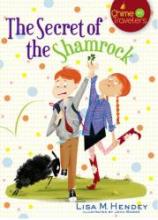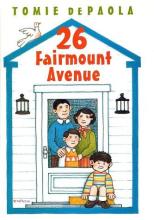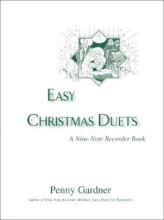No name
Peter Treegate's War
Because of the impersonal nature of the battle scenes and the need for a mature understanding of the issues surrounding war, the suggested reading level is high school.
Spring's Gift of Hope
The New St. Joseph Baltimore Catechism No. 2
Book no. 2 has the same division and order as book no. 1, reviewed here, but the lessons are more in depth for the older student, taking a spiral approach. Its recommended use is for grades six through eight.
This book is available from nearly all Catholic homeschool providers.
The Secret of the Shamrock
26 Fairmount Avenue Series
Click the title below for a review of the first book in the series. Individual titles in chronological order:
- 26 Fairmount Avenue
- Here We All Are
- On My Way
- What a Year!
- Things Will Never be the Same
- I'm Still Scared
- Why? The War Years
- For the Duration: The War Years
These books also make delightful read-alouds.
26 Fairmount Avenue
With 26 Fairmount Avenue, Tomie dePaola has written an account of when he was four and five years old and awaiting the building of his new home on Fairmount Ave. The story opens in 1938 with a huge hurricane blowing into town, upsetting life as well as trees. Mama calms everyone's fears by sprinkling the neighbors and the children with holy water. (Direct Catholic references are few, but nice to see.)
Primarily, his Catholic faith is witnessed through his family's relationships with one another, as well as their friends and neighbors. For instance, Tomie's relationship with his great grandmother is a beautiful example of a young child loving and respecting an elderly person. Tomie likes to spend time with his great grandmother. "...my Nana upstairs was a special person to me. I loved her and every Sunday I spent all my time with her." This is quite amazing for a child his age when you realize that Nana upstairs is so old that she has to be tied into a chair so that she won't fall over.
Written with warmth and amusing anecdotes, this book is a delight to read. I highly recommend reading his numerous other books as well.
If you are interested in reading more about his childhood, Nana Upstairs and Nana Downstairs is about his visiting his great grandmother. Now One Foot, Now the Other and Tom are about his grandfather. The Baby Sister is about his joyful anticipation of his baby sister and the difficulties of waiting for her arrival. The Art Lesson is about his love of art, his desire to be an artist someday, and his hope to take a "real" art lesson in school with a "real" art teacher. All these books are picture books, expressing a child's point of view with reverence for others and respect and joy for life.
St. Paul: A Bible Study Guide for Catholics
First Farm in the Valley: Anna's Story
Recommended reading age 8-12; Suggested listening age 5-Up. Of interest to older children and boys as well.
Easy Christmas Duets
Bravo for another treasure from Penny Gardner! The 40 plus songs in this book provide plenty of material for Christmas programs or supplemental lesson work. Organized according to ease of playing, these pieces presume some prior recorder experience. (For those brand new to the instrument, I highly recommend the original Nine-Note Recorder Method text which includes instruction and 30 familiar Christmas songs.)
The duet and trio arrangements in Easy Duets for Christmas allow for creative use of any two or more "C" instruments; imagine "O Come, O Come Emmanuel" or "Lo, How a Rose E'er Blooming" on combined recorder, violin and piano. Our seven year old is reading some of the easiest pieces ("Jolly Old Saint Nicholas" and "We Three Kings"), and a little augmentation from siblings - easy with the duets in this book - makes his efforts sound very polished.
If you are looking for some new music to add to your Christmas repertoire, this book would be a wonderful, affordable choice.










